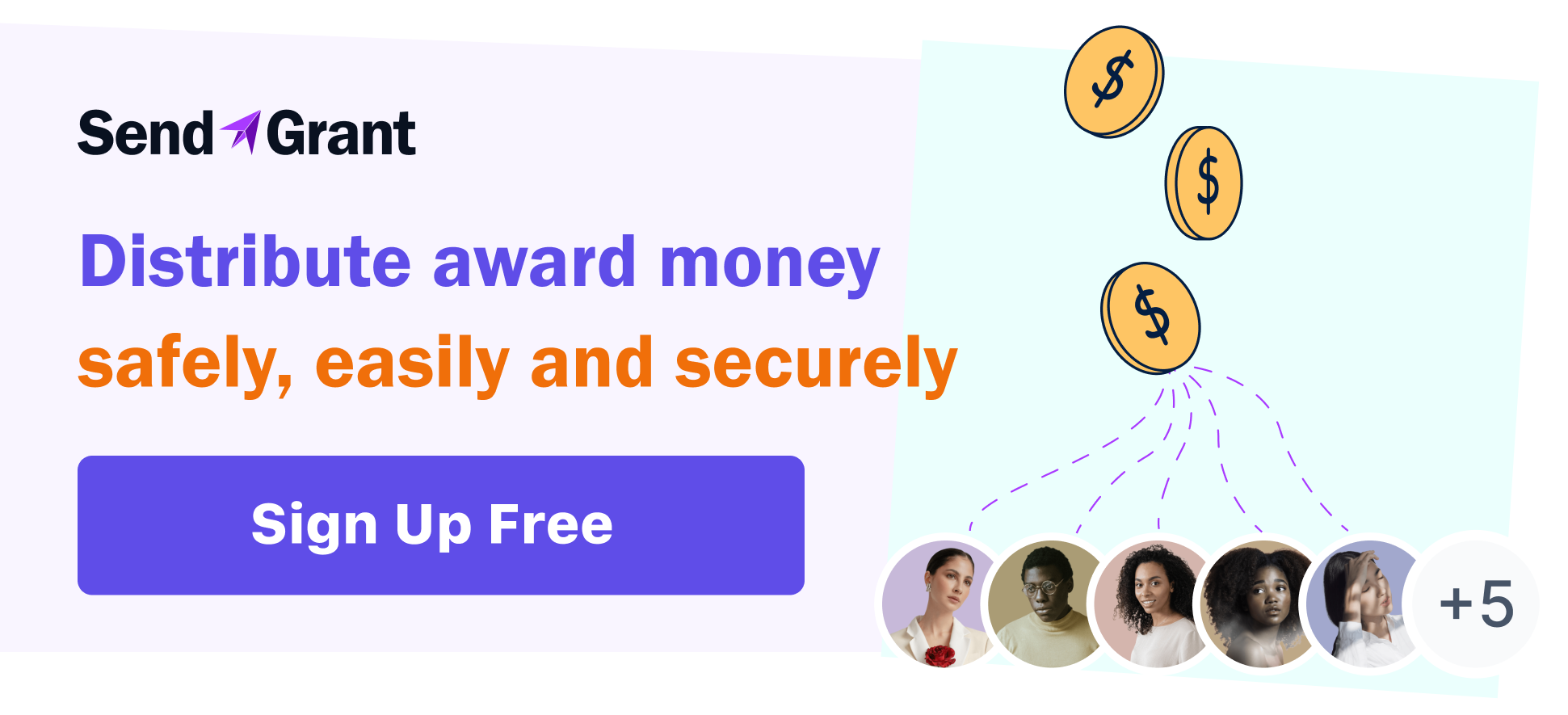Restricted Vs Unrestricted Grants - How to Manage Either
Let’s talk about restricted vs unrestricted grants. Grants are the lifeblood of many organizations, fueling important projects and initiatives. What some people may not realize though is not all grants are created equal.
Understanding the difference between restricted vs unrestricted funds is crucial for effective fund management. If we’ve piqued your interest, keep reading as we dive into the world of grant funding and explore how to navigate these two types of financial support.
The Great Divide: Restricted vs Unrestricted Grants
At its core, the distinction between restricted vs unrestricted funds lies in how the funds can be used. Restricted grants come with specific conditions, while unrestricted grants offer more flexibility. What does this mean - really?
Restricted grants are very much like receiving a gift card for a specific store. It can only be used at that one store, and you are limited to the amount of money that is on the card.
Similarly, with a grant that is restricted, the grantmaker designates exactly how the money should be spent, usually for a particular program or project. For example, a grant might be earmarked for a youth literacy program or to purchase new equipment for a science lab. These funds are off-limits for any other purpose, no matter how pressing the need might be elsewhere in the organization.
On the flip side, unrestricted grants are more like giving someone cash. The funds can be used however the organization sees fit, whether that's for general operating expenses, salaries, or to fill gaps in program funding.
While the grant receiver is still limited in terms of the amount of cash they are given, if they manage to drum up additional funds, they can use them along with their cash to buy, well, anything they need to succeed in their projects and goals. This flexibility can be a game-changer for nonprofits, allowing them to address their most urgent needs or invest in long-term sustainability.
The Pros and Cons: Weighing the Benefits and Challenges
Both types of grants come with their own set of advantages and drawbacks. Let's break them down, shall we?
Restricted Grants
Let’s first explore the pros and cons of restricted grants.
Pros:
- Help launch specific programs or initiatives
- Build donor trust by ensuring funds are used as intended
- Can lead to larger donations for passionate supporters
Cons:
- Limited flexibility in fund allocation
- May not cover indirect costs or overhead
- Can create funding imbalances within an organization
Unrestricted Grants
Now, let’s explore the pros and cons of unrestricted grants.
Pros:
- Offer maximum flexibility to meet organizational needs
- Can support essential but less "glamorous" expenses like salaries and rent
- Allow for strategic long-term planning and investment
Cons:
- May be harder to secure as many, if not most, donors prefer more control
- Require strong financial management to ensure responsible use
- May necessitate more detailed reporting to maintain donor trust
Navigating the Restricted Waters: Managing Earmarked Funds
When it comes to restricted grants, proper management is key to maintaining compliance and donor relationships. Here are some strategies to keep your restricted funds on track:
- Create separate budgets: Set up distinct budgets for each restricted grant to ensure proper allocation and tracking.
- Implement robust tracking systems: Use accounting software or specialized grant management tools to monitor expenses and ensure funds are used as intended.
- Regular reconciliation: Perform frequent checks to match grant expenditures with the approved budget and purpose.
- Clear communication: Keep all team members informed about grant restrictions to prevent misuse of funds.
- Timely reporting: Stay on top of reporting requirements to keep donors informed and maintain transparency.
Unleashing Potential: Strategies for Unrestricted Grant Management
While unrestricted grants offer more freedom, they also require thoughtful management to maximize their impact. Consider these approaches:
- Prioritize strategically: Align unrestricted funds with your organization's most pressing needs and long-term goals.
- Create a flexible budget: Develop a budget that allows for agility in responding to emerging needs or opportunities.
- Invest in sustainability: Use unrestricted funds to build organizational capacity, invest in technology, or create reserve funds.
- Demonstrate impact: Even without specific restrictions, show donors how their unrestricted gifts are making a difference.
- Balance short-term needs with long-term vision: Address immediate concerns while also investing in future growth and stability.
Staying on the Right Side: Compliance Considerations for Restricted Grants

Compliance is paramount when dealing with restricted grants. Misuse of funds can lead to serious consequences, including legal action or damage to your organization's reputation. Keep these compliance considerations in mind:
- Document everything: Maintain detailed records of how restricted funds are used, including receipts and justifications for expenses.
- Understand the fine print: Carefully review grant agreements to ensure full comprehension of all restrictions and requirements.
- Implement internal controls: Establish checks and balances to prevent accidental misuse of restricted funds.
- Regular audits: Conduct internal audits to catch and correct any compliance issues early.
- Open communication: If challenges arise in using funds as intended, proactively communicate with the donor to discuss potential solutions.
Maximizing Flexibility: Making the Most of Unrestricted Funds
Unrestricted grants are a valuable resource, offering the freedom to address your organization's most pressing needs. Here's how to maximize their potential:
- Conduct a needs assessment: Regularly evaluate your organization's needs to ensure unrestricted funds are used where they'll have the greatest impact.
- Build a strong case for support: Clearly communicate to donors why unrestricted funding is crucial for your mission.
- Demonstrate responsible stewardship: Show how unrestricted funds contribute to overall organizational effectiveness and impact.
- Invest in innovation: Use the flexibility of unrestricted funds to test new ideas or pilot programs that could lead to future growth.
- Address funding gaps: Fill in where restricted grants fall short, such as covering overhead costs or supporting understaffed departments.
Telling the Story: Reporting Differences Between Grant Types
Reporting requirements can vary significantly between restricted vs unrestricted grants. Here's what you need to know:
Restricted Grants:
- Typically require detailed reports showing how funds were used for the specific purpose
- May need to provide receipts or other documentation
- Often involve progress reports on the funded project or program
Unrestricted Grants:
- Generally have more flexible reporting requirements
- Focus on overall organizational impact rather than specific line items
- May require broader financial statements and descriptions of how funds contributed to mission fulfillment
Regardless of the grant type, always strive for transparency and clarity in your reporting to build trust with funders.
Striking a Balance: The Art of Funding Diversification
A healthy mix of restricted and unrestricted funding can provide both stability and flexibility for your organization. Here are some tips for achieving balance:
- Diversify funding sources: Seek a mix of individual donors, foundations, and corporate sponsors.
- Educate donors: Help supporters understand the value of both restricted and unrestricted gifts.
- Negotiate for flexibility: When possible, discuss with donors the possibility of allocating a portion of restricted grants for general operating support.
- Build unrestricted reserves: Use periods of abundance to create a cushion for leaner times.
- Regularly assess your funding mix: Continuously evaluate and adjust your fundraising strategy to maintain a healthy balance.
The Donor Dialogue: Communicating About Fund Usage
When it comes to restricted vs unrestricted grants, open and honest communication with funders is crucial. Maintaining clear lines of communication can make all the difference in building trust and ensuring continued support.
Start by being proactive; don't wait for donors to ask about fund usage – provide regular updates on how their contributions are making an impact. Tell compelling stories that illustrate the power of both restricted and unrestricted funds, using specific examples and data to bring your narrative to life.
If challenges arise, particularly with restricted funds, address them openly and promptly with the donor to find collaborative solutions. It's also important to highlight the value of flexibility that comes with unrestricted funds, helping donors understand how these contributions enable your organization to respond swiftly to changing needs and opportunities.
Lastly, create an environment of open dialogue by encouraging donors to ask questions and provide feedback on fund usage. This two-way communication not only strengthens your relationship with funders but also provides valuable insights that can help refine your approach to grant management.
Streamlining the Process: How SendGrant Handles Both Grant Types

Managing different types of grants can be complex, but tools like SendGrant can simplify the process. SendGrant offers a secure, efficient platform for distributing both restricted and unrestricted funds while communicating program guidelines.
For assistance with restricted and unrestricted grants, SendGrant provides:
- Centralized management for efficient allocation of funds
- Flexible distribution options to align with organizational needs
- Automated notifications to keep all parties informed about fund distribution
Whether you're dealing with restricted vs unrestricted grants, SendGrant's platform can help you maintain transparency, ensure compliance, and maximize the impact of your funding.
To close things out, we can’t deny both restricted and unrestricted grants play vital roles in supporting nonprofit organizations. It’s critical to:
- Understand the nuances of each
- Implement effective management strategies, and
- Maintain open communication with funders
Remember, the key is to strike a balance that allows your organization to meet specific program needs while maintaining the flexibility to adapt and grow. With the right approach and tools like SendGrant, you can navigate the world of grants with confidence and maximize your impact. Click here to learn more about SendGrant, and try it for free!



